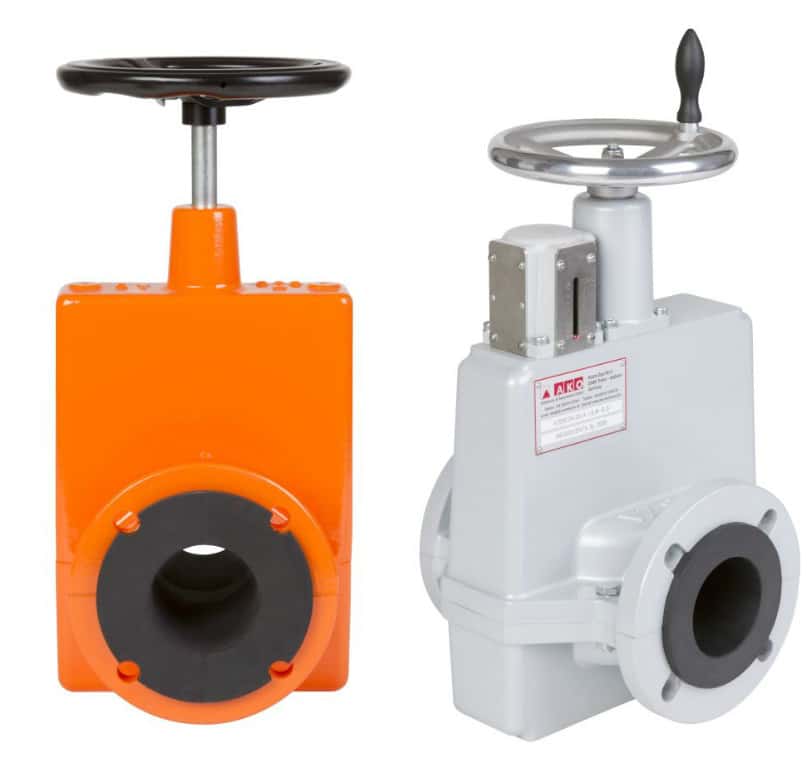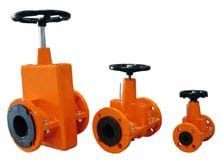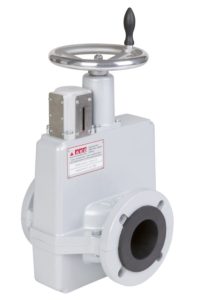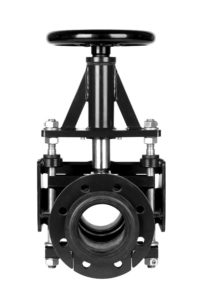DN15 – DN100 maximum 5 bar
DN125 – DN200 maximum 3 bar
DN250 maximum 2 bar

AKO’s manual pinch valves advantages include the free flow of the product, minimum frictional resistance and low maintenance and operating costs.
A further advantage is the reduction of the parts in contact with the medium – the sleeve being the only component in contact with the product flow. In addition, deformation of the sleeve during the closing process causes any incrustations inside the sleeve to break away. This means that the manual Pinch Valve is a practically blockage-free valve solution. Furthermore, even larger solid particles are shut off by the sleeve, which is particularly resistant to abrasion and corrosion, hence shut off without leaks.
These types of manual Pinch Valves are typically used within industrial areas such as cement, pigments and granules, ceramics and glass, sewage water, mud, and more.
How Manual Pinch Valves Work:
The rubber sleeve of the manual Pinch Valve is controlled by a mechanism inside the casing. The mechanism comprises one or two pinch bars arranged horizontally above and below the sleeve, and is guided at the side by two rods. Manual Pinch Valves are operated using a hand wheel.
The hand wheel mechanism causes the pinch bar(s) to pinch the sleeve horizontally (centrally, depending on the nominal size). This provides an effective seal on the flow of product. In addition, a direct connection between the sleeve and the pinch bar(s) ensures an optimum opening of the sleeve to provide the full passage. The maximum operating pressure of the manual Pinch Valve is dependent on the type and nominal size, and is between 3 and 40 Bar.
For further information in 16 different languages see our headquarters site https://www.pinch-valve.com/products/manual-and-control-pinch-valves.html





